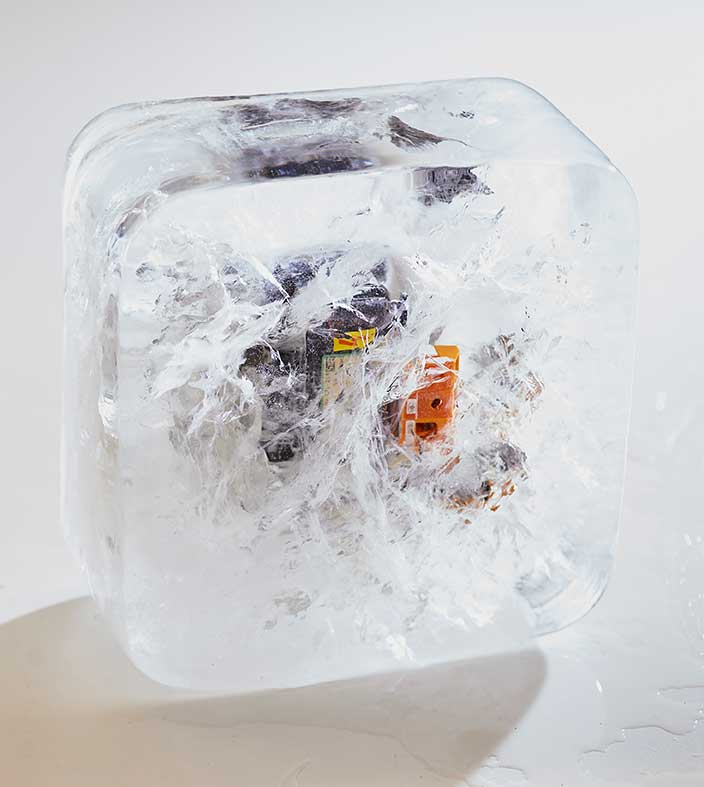In most cases icing tests are carried out in a climatic chamber to check the function of a device in situations where ice or frost may occur. This can happen in situations where temperature, altitude, and humidity change rapidly.
EMCC's experts can conduct icing tests in accordance with the RTCA DO-160 and MIL-STD-810.
A: This test is applicable to equipment mounted externally or in non-temperature-controlled areas of the aircraft, where ice or frost may form as due to condensation when the equipment is cold soaked to extremely low temperatures and then is exposed to humid air at temperatures above freezing.
B. This test applies to equipment with moving elements where ice formation might prevent or impede movement, or where forces caused by the expansion of ice could damage structural or functional components. Condensation, freezing, melting, and/or re-freezing can cause ice to develop in or on equipment, which can lead to water or ice accumulation inside non-sealed enclosures.
C: This test is relevant for objects mounted externally or in non-temperature-controlled areas where there is risk of accumulating free water and subsequently freezing on the equipment's cold surfaces. The purpose of the test is to see how a representative thickness of ice affects the equipment's performance or to determine the maximum thickness that can be tolerated before de-icing is required. The applicable equipment performance standards describe the needed ice thickness and distribution, as well as any requirements for progressive ice build-up.

Step 1. Stabilize the test item temperature at 0 °C (-0/+2 °C (32 °F (-0/+4 °F)).
Step 2. Deliver a uniform, pre-cooled water spray for 1 hour to allow water penetration into the test item crevices/openings.
Step 3. Adjust the chamber air temperature to -10 °C (14 °F) or as specified and maintain the water spray rate until the required thickness of ice has accumulated on the appropriate surfaces.
Step 4. Maintain the chamber air temperature for a minimum of 4 hours to allow the ice to harden. Examine for safety hazards and, if appropriate, attempt to operate the test item.
Step 5. If Step 4 has resulted in failure, or if the specification requires or allows ice removal, remove the ice.
Step 6. Examine for safety hazards and, if appropriate (and possible), attempt to operate the test item at the specified low operating temperature of the materiel.
Step 7. If required, repeat Steps 3 through 6 to produce other required thicknesses of ice.
Step 8. Stabilize the test item at standard ambient conditions and perform a post-test operational check.
Step 9. Document (with photographs if necessary) the results for comparison with pretest data.